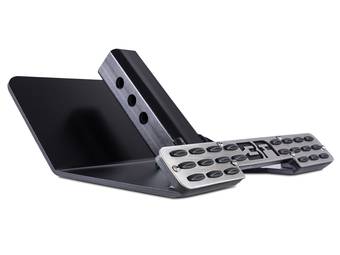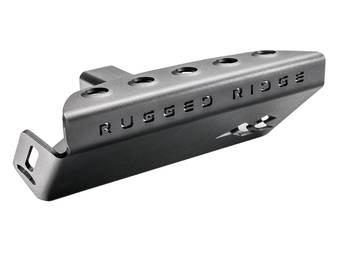Free Shipping On Orders Over $100
Select Your Vehicle
2004 Ford Ranger Skid Plates
Only display items that ship the quickest
What Are Skid Plates?
If you’re an avid offroad, overlander, or weekend-wheeler, consider investing in premium underbody Skid Plates from RealTruck!
These accessories offer superior underbody protection, guarding delicate, damage-prone components of the chassis against harsh impacts and abrasions on the trail.
Skid Plates typically feature durable alloy constructions–aluminum, like RIVAL Aluminum Skid Plates, or steel, like Rugged Ridge Differential Skid Plates–to withstand banging and scraping across rocks and other obstacles.
Common skid plate locations include transfer cases, oil pans, front suspensions, gas tanks, and driveline/differentials, preventing damage to any essential systems that could leave you stranded!
Skid Plate Considerations
When selecting skid plates for your ride, consider the following factors to ensure adequate underbody protection.
The first consideration is skid plate type or location. As aforementioned, skid plates typically come in several form factors to protect different components, including:
Front bumper skid plates
Steering linkage skid plates
Engine and transmission skid plates
Exhaust and gas tank skid plates
Hitch skid plates
And many more! Protecting these vital areas ensures your ride makes it home from every wheeling trip; the last thing you’ll want is to become stranded in the middle of nowhere!
Another consideration is construction, including the base material, thickness, and finish. The two most popular skid plate base materials are aluminum and carbon steel. Aluminum is significantly lighter and more corrosion-resistant than steel; however, it’s also softer and less durable.
Alternatively, steel is far more durable and impact-resistant; however, it’s heavier and more prone to rust and oxidation.
Regarding material thickness, skid plates come in several thicknesses, also called gauges. The higher the numerical value, the thicker the skid plate! Thicker skid plates offer more protection; however, they’re also heavier. It’s best to find the perfect balance of thickness and weight, ensuring adequate protection without weighing down the chassis.
Regarding finish, most skids feature a durable coating or plating, like powder coating, to prevent corrosion. This material offers exceptional corrosion resistance and sleek styling. It’s also durable, resisting chips, scratches, UV exposure, and oil/chemical contamination!
You should also consider ground clearance, as this is an essential quality of any wheeler! The more ground clearance, the taller obstacles a vehicle can conquer. Unfortunately, most skid plates hang below the chassis, reducing ground clearance. When selecting your skid plate, ensure the product minimally reduces ground clearance.
Lastly, consider ventilation. While not necessary for all skid plates, some types, like engine and transmission skid plates, require adequate ventilation to keep fluid temperatures in check. Excess heat due to poor ventilation can significantly reduce fluid life and, thus, increase wear.
Off-Road Accessories and Resources
RealTruck caters to every auto enthusiast, including off-roaders and overlanders! We offer several parts and components to transform a bone-stock platform into a full-blown wheeler, including winches, recovery gear, lift kits, body armor, and more!
But we aren’t just parts pushers; we’re also here to educate and assist every enthusiast, from the novice to the experienced wheeler! Check out some of our leading off-road resources on RealSource, your source for everything truck, Jeep, and SUV!


